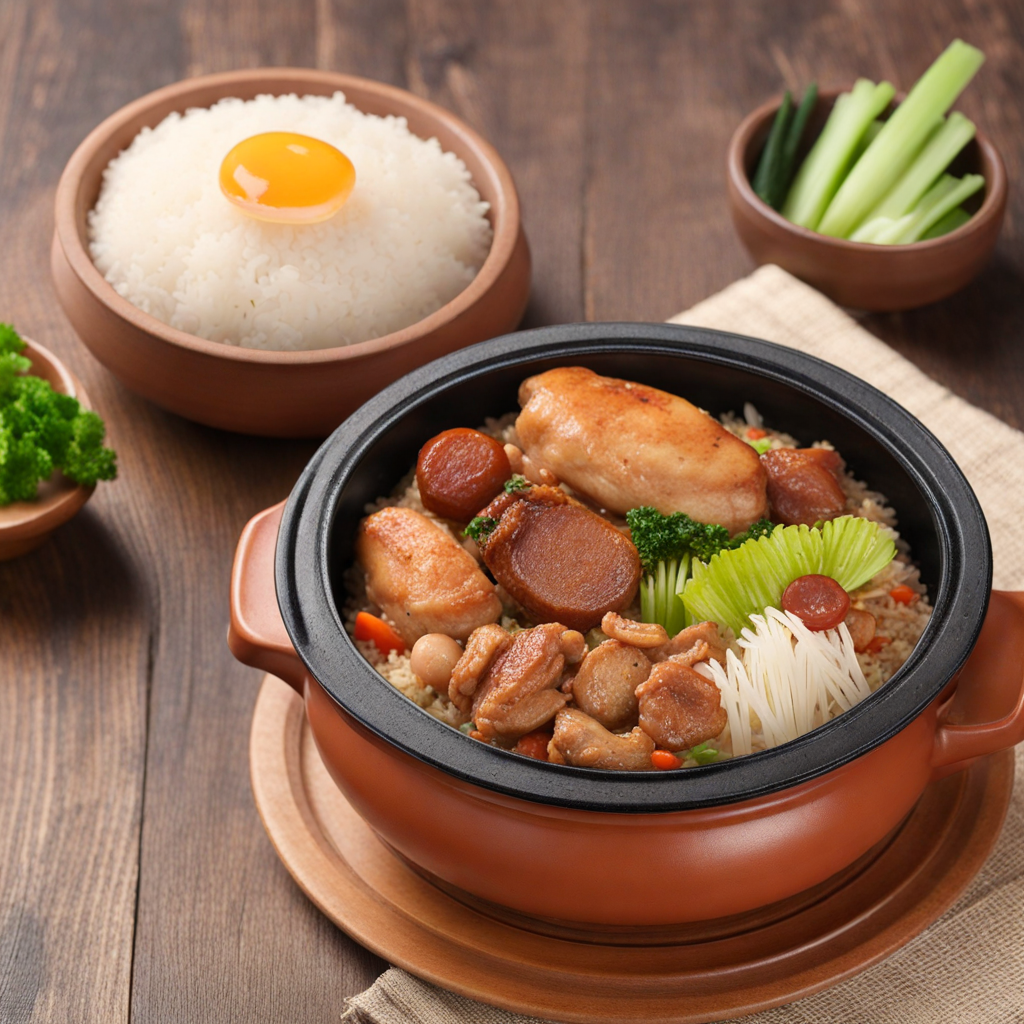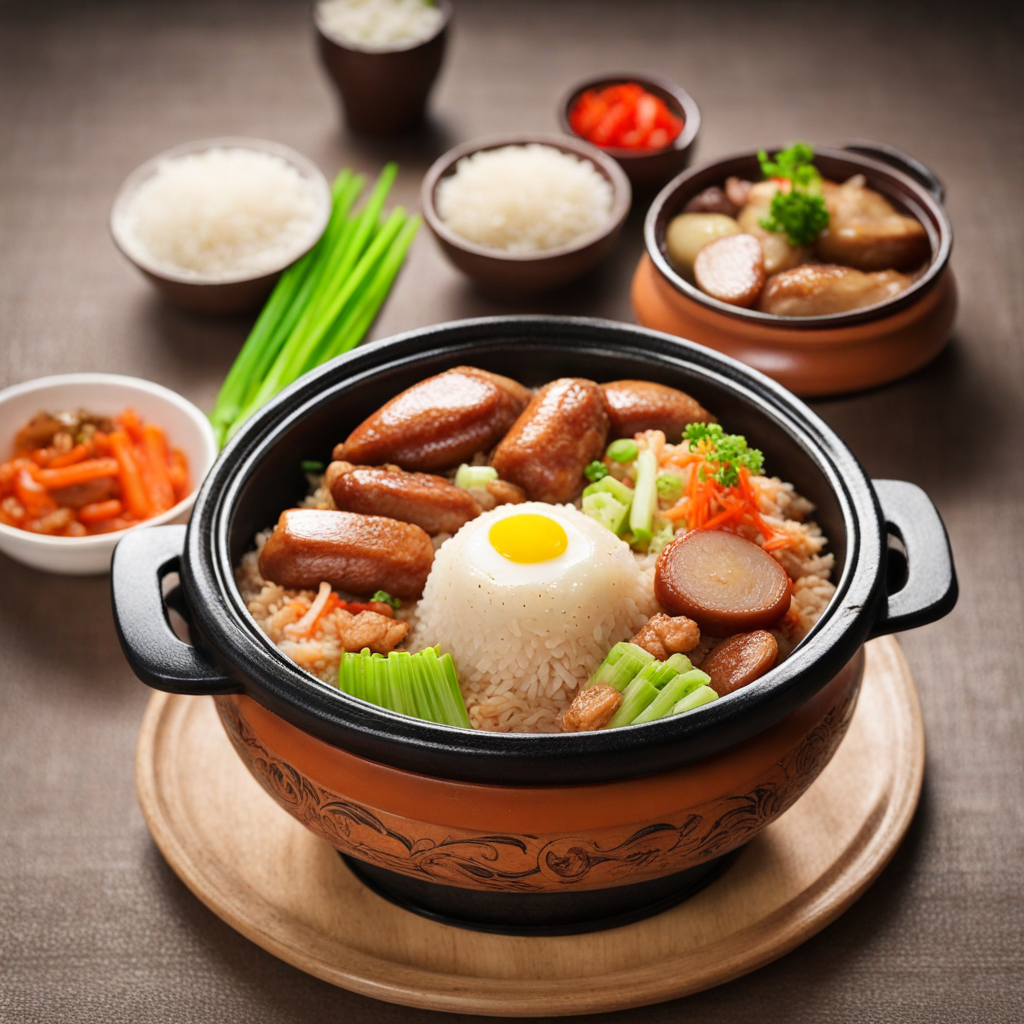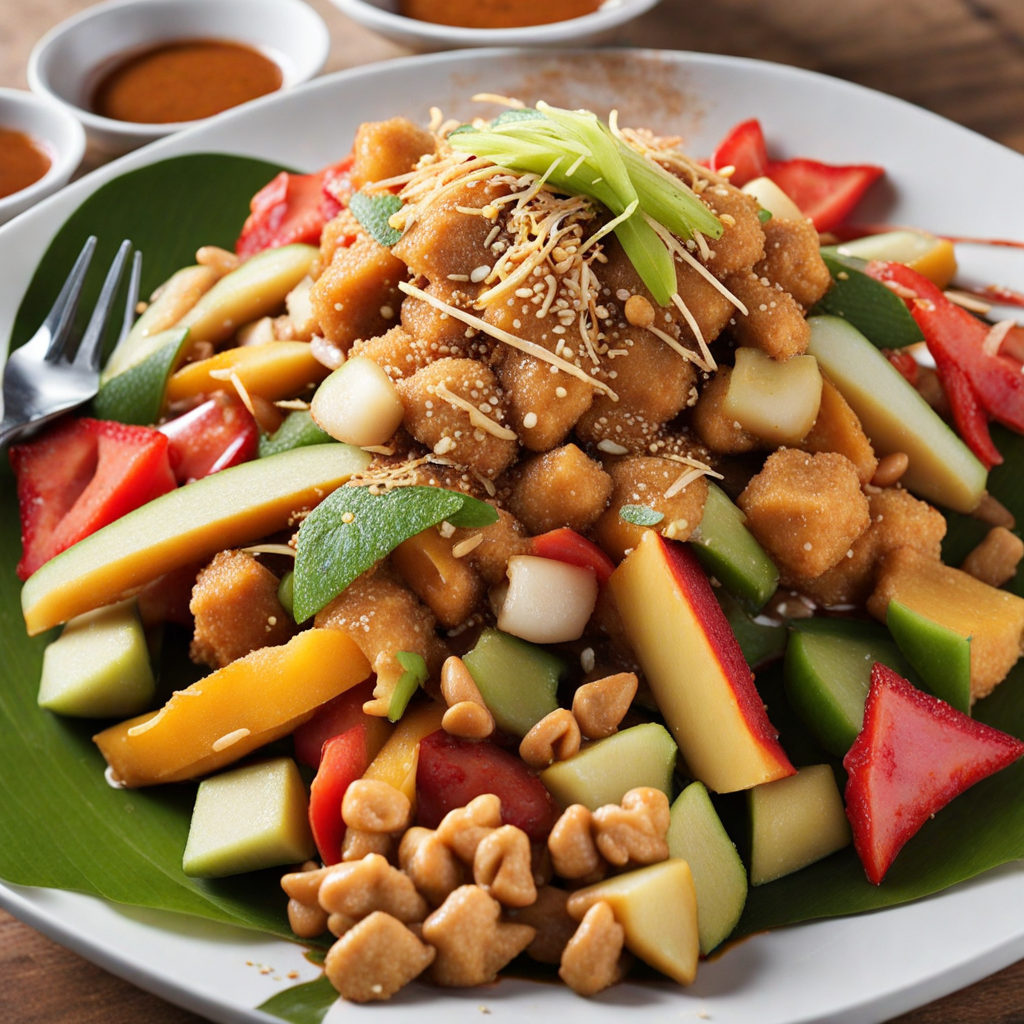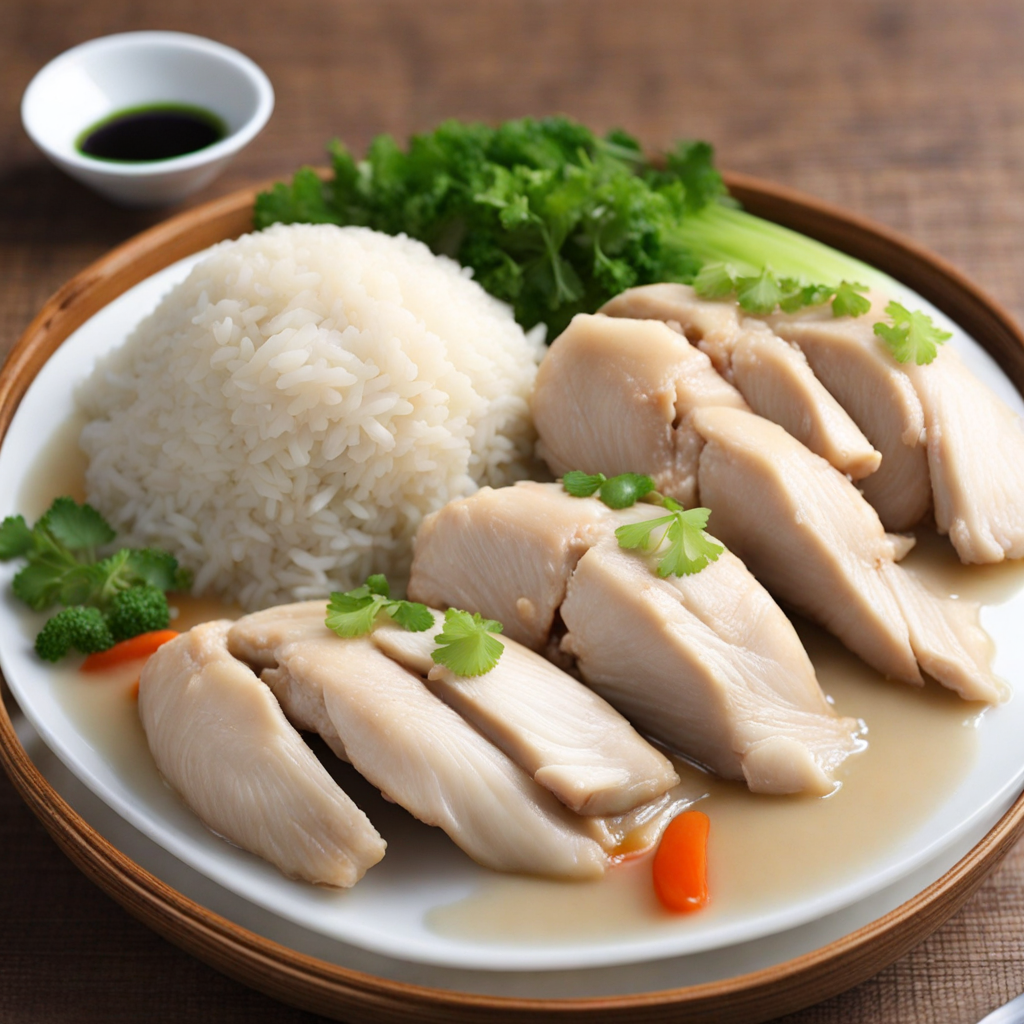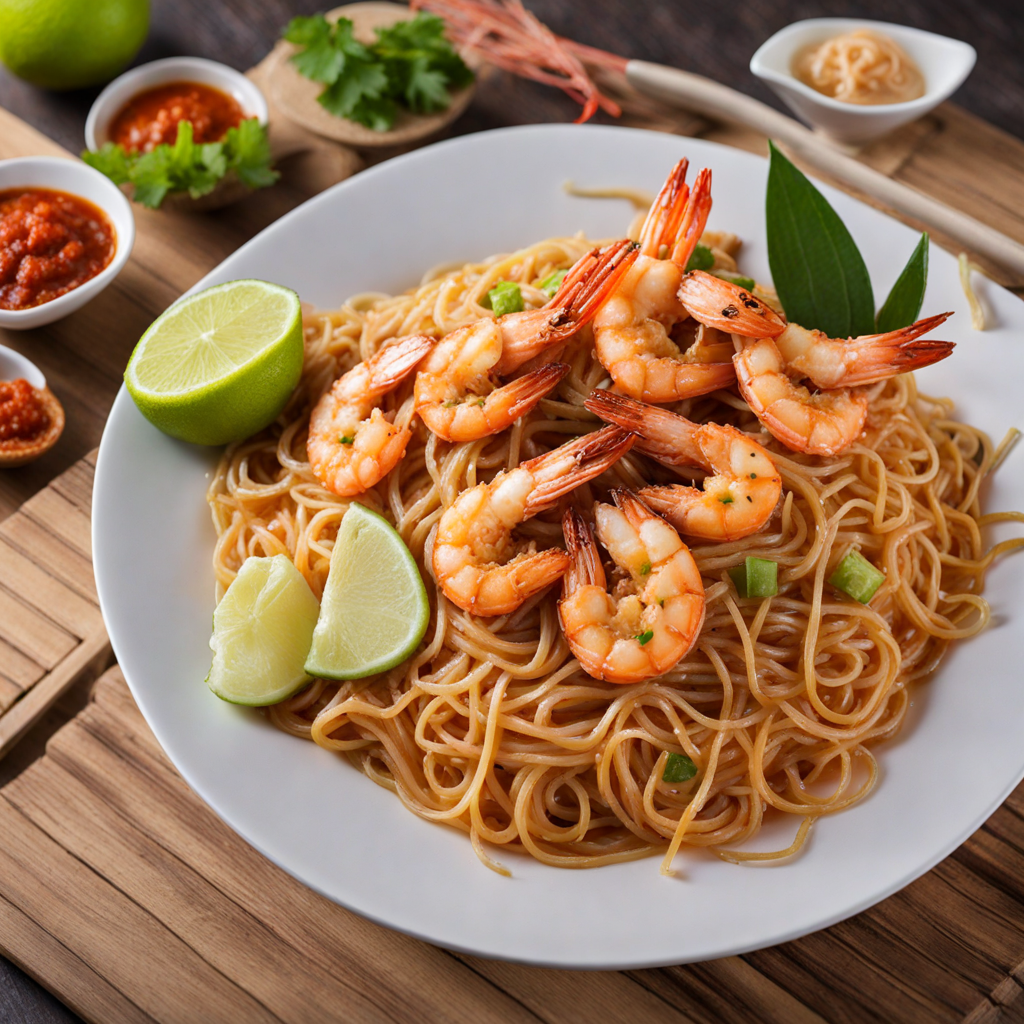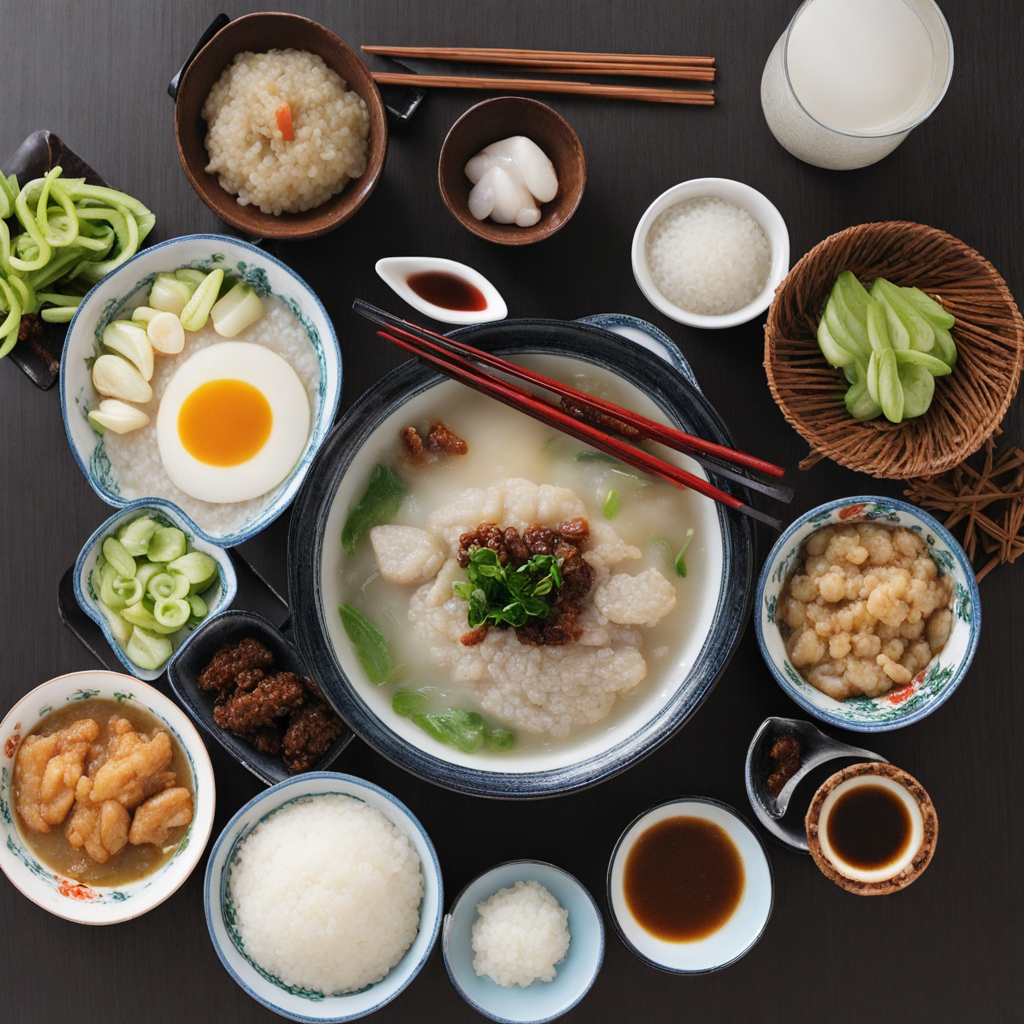Claypot Rice
Claypot Rice is a beloved culinary delight from Singapore, cherished for its rich flavors and comforting, home-style appeal. Traditionally cooked in a clay pot, this dish consists of fragrant rice that absorbs the essence of various ingredients as it cooks. The base is typically a blend of jasmine rice or glutinous rice, steamed to perfection, creating a fluffy yet slightly sticky texture. As the rice cooks, it forms a delectable crust at the bottom known as 'socarrat,' which adds a delightful crunch to each bite. What makes Claypot Rice truly special is its versatility. The dish often features a medley of toppings that can include marinated chicken, succulent Chinese sausages, fresh prawns, or tender mushrooms, all simmered atop the rice. These ingredients are often seasoned with a mix of soy sauce, oyster sauce, and sesame oil, lending a savory depth that tantalizes the taste buds. The gentle heat of the clay pot allows the flavors to meld beautifully, creating a harmonious balance that is both satisfying and aromatic. Served directly from the pot, Claypot Rice is often accompanied by sides such as pickled vegetables or chili sauce, enhancing its overall taste experience. Diners traditionally mix the ingredients together before enjoying, ensuring each spoonful is a perfect blend of flavors. With its comforting warmth and hearty ingredients, Claypot Rice is not just a meal; it's an experience that invites you to savor the rich culinary heritage of Singapore.
How It Became This Dish
The Culinary Journey of 煲仔饭 (Claypot Rice) in Singapore #### Origins of 煲仔饭 煲仔饭, or Claypot Rice, is a cherished dish that embodies the rich culinary tapestry of Singapore, a melting pot of cultures and traditions. Its roots can be traced back to the Southern regions of China, particularly Guangdong, where the dish is known as "煲仔飯" (pronounced "bau zai fan"). Historically, this dish emerged from the necessity of cooking rice in a clay pot, a method that not only preserved moisture but also imparted a unique smoky flavor to the grains. The traditional preparation of claypot rice involves layering raw rice with various ingredients such as meats, vegetables, and sometimes seafood. The pot is then placed over a flame until the rice is cooked to perfection, forming a delightful crust at the bottom known as "锅巴" (guō bā). This crispy layer is often the highlight of the dish, offering a contrast in texture to the tender grains above. #### Arrival in Singapore The arrival of claypot rice in Singapore can be linked to the influx of Chinese immigrants during the 19th and early 20th centuries. These immigrants brought with them not just their labor but also their culinary traditions, which began to flourish in the multicultural environment of Singapore. As they settled into different neighborhoods, distinct variations of claypot rice began to emerge, influenced by local ingredients and flavors. The dish found a particular affinity with the Hokkien and Cantonese communities, who adapted the traditional recipes to align with local tastes. With Singapore’s diverse food landscape, claypot rice evolved from its simple origins into a variety of styles, incorporating local ingredients like chicken, Chinese sausage (lap Cheong), salted fish, and an assortment of vegetables. #### Cultural Significance Claypot rice holds a significant place in the hearts of Singaporeans, reflecting the nation’s culinary diversity and communal dining practices. It is often enjoyed during family gatherings, celebrations, and casual meals, embodying the spirit of sharing and togetherness. The communal aspect of the dish—where family and friends gather around a steaming pot, scooping out servings—mirrors the broader Singaporean culture of bonding over food. Moreover, the dish's adaptability allows it to transcend cultural boundaries. While it originates from Chinese culinary traditions, it has been embraced and modified by various ethnic groups in Singapore. This adaptability showcases the harmonious blending of cultures, a hallmark of Singapore's identity. #### Development Over Time As Singapore developed into a global city, so too did its culinary scene. The post-independence era in the 1960s and 1970s marked a significant transformation in the food landscape. The rise of hawker centers—affordable food courts that offered a variety of local dishes—helped popularize claypot rice among the masses. Vendors began to offer their versions, often fusing traditional elements with local flavors, such as the addition of chili sauce or the use of curry spices. Throughout the years, claypot rice also found its way into upscale dining establishments, where chefs experimented with gourmet ingredients and innovative techniques. Contemporary variations began to emerge, incorporating elements like truffle oil, premium cuts of meat, or fusion ingredients that appealed to a broader, more cosmopolitan audience. Today, one can find claypot rice in many forms across Singapore, from humble hawker stalls to high-end restaurants. The dish has also made its way into the culinary lexicon of Singapore’s vibrant food culture, becoming a staple in both local and international contexts. #### Modern Interpretations and Trends In recent years, the popularity of claypot rice has surged, fueled by a growing interest in heirloom cooking techniques and the resurgence of traditional flavors. Chefs across Singapore are revisiting this dish, with many emphasizing the importance of quality ingredients and the art of slow cooking. Social media has played a significant role in this revival. Platforms like Instagram and TikTok have allowed diners to showcase their dining experiences, turning claypot rice into a visual feast that attracts food lovers. The presentation of the dish has also evolved, with many restaurants focusing on aesthetics, ensuring that the dish not only tastes good but looks appealing as well. Additionally, there has been a growing awareness of health and sustainability in the food industry. Many modern interpretations of claypot rice now feature organic vegetables, sustainably sourced proteins, and healthier cooking methods, aligning with contemporary dietary preferences. #### Conclusion 煲仔饭 (Claypot Rice) is more than just a meal; it is a representation of Singapore’s rich cultural heritage and the seamless blend of tradition and modernity. Its journey from a humble pot of rice to a beloved staple in Singaporean cuisine illustrates the evolution of culinary practices shaped by history, migration, and innovation. As Singapore continues to grow and diversify, claypot rice will undoubtedly remain a significant dish that connects generations, serving as a reminder of the nation’s roots while embracing the future. Whether enjoyed in a bustling hawker center or a chic restaurant, the dish remains a symbol of the warmth of communal dining, the richness of cultural exchange, and the enduring legacy of Singapore’s culinary history.
You may like
Discover local flavors from Singapore


